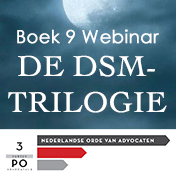Ranee van der Straaten: Smell-alikes: Lessons from Chanel and Coty's smell-alike victory
27-09-2017 Print this page
World Trademark Review, december 2016/januari 2017, issue 64, p. 22-23, Ranee van der Straaten (Banning):
“This article first appeared in World Trademark Review issue 64, published by Globe Business Media Group – IP Division. To view the issue in full, please go to www.WorldTrademarkReview.com.”
“Across Europe, the flourishing trade in smell-alikes is a thorn in the side of proprietors of well-known perfume trademarks. However, their position in the Netherlands has been strengthened by a judgment from the District Court of The Hague.”
[…]
"The District Court of The Hague established that Coty’s and Chanel’s trademarks were well known due to continuing investments and efforts in advertising and protection. The court ruled that the use of these marks in comparative ads is permitted only if it meets the cumulative requirements of the EU Comparative Advertising Directive (84/450/EEC), as implemented in Dutch law. As with any comparative ad, Bargello’s ads should not present goods or services as imitations or replicas of goods or services bearing a protected trademark or trade name – this condition applies not only to counterfeit goods, but also to any imitation or replica. According to the court, Bargello’s ads crossed these boundaries. They created the impression that Bargello’s perfumes were imitations or replicas of Coty’s and Chanel’s, explicitly stating: “400 brand perfumes, you won’t notice any difference, except for in your wallet!” The court found that the comparison lists – which comprised a number, directly followed by a well-known perfume trademark belonging to (among others) Chanel and Coty – also presented Bargello’s perfumes as imitations of Chanel’s and Coty’s. Moreover, the court noted that Chanel’s and Coty’s trademarks played a larger role in Bargello’s sales strategy than necessary for a comparative ad. In light of the distinctive character and reputation of Chanel’s and Coty’s marks, it concluded that Bargello was taking unfair advantage of the distinctive character and reputation of those trademarks."
[...]
“This judgment has strengthened the legal position of owners of well-known perfume trademarks in the Netherlands. When the boundaries of comparative ads are crossed, the use of perfume comparison lists constitutes trademark infringement – even if such lists are used internally only. If the well-known perfume trademarks play a crucial role in the communication process by presenting the smell-alikes as imitations of the trademark perfumes, the business might get stinky.”
Zie ook IPPT.eu



























































